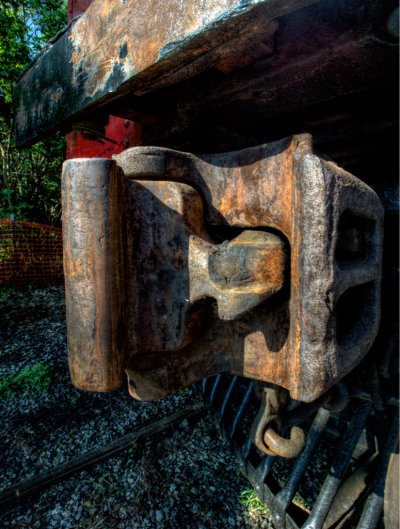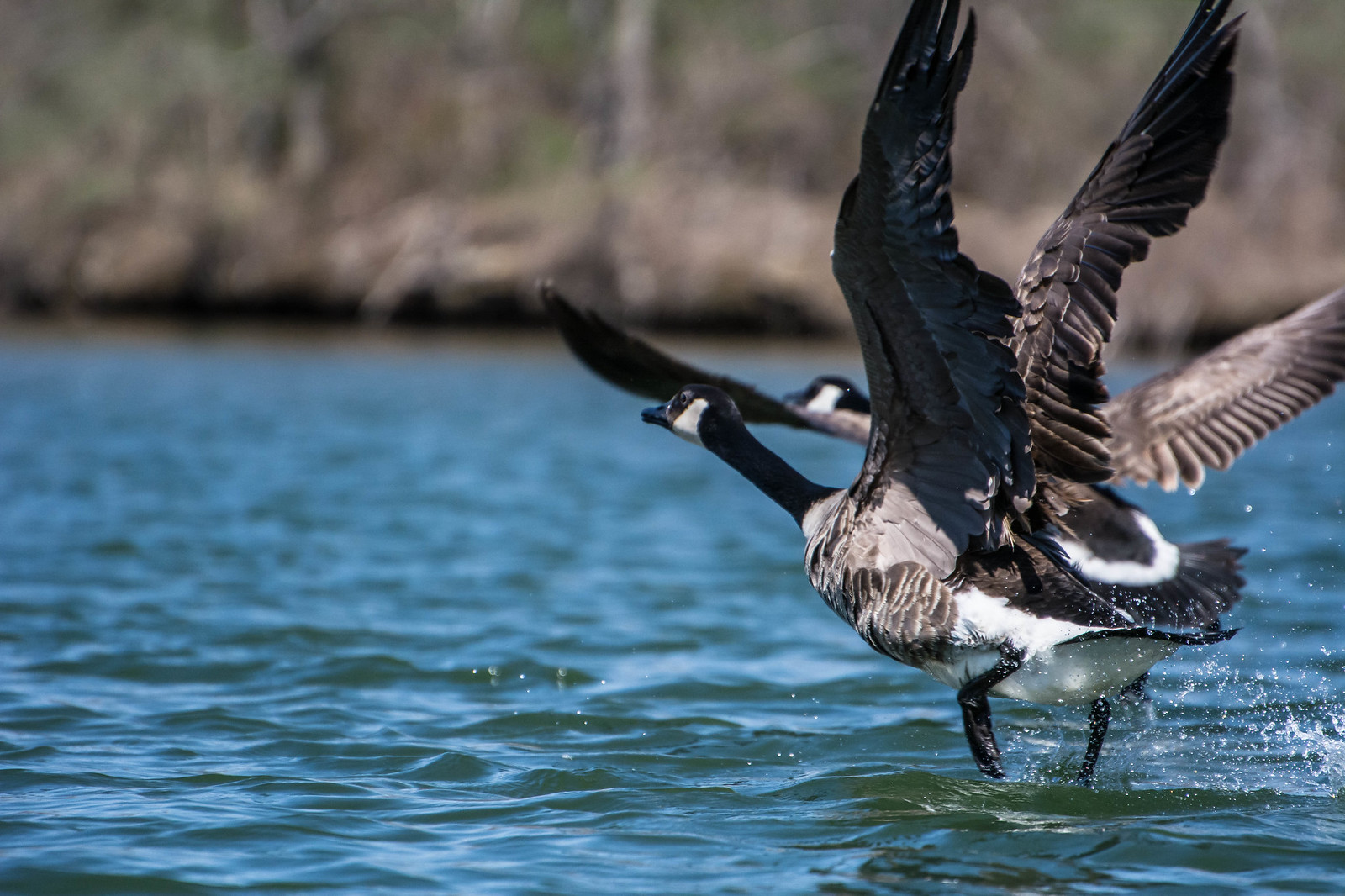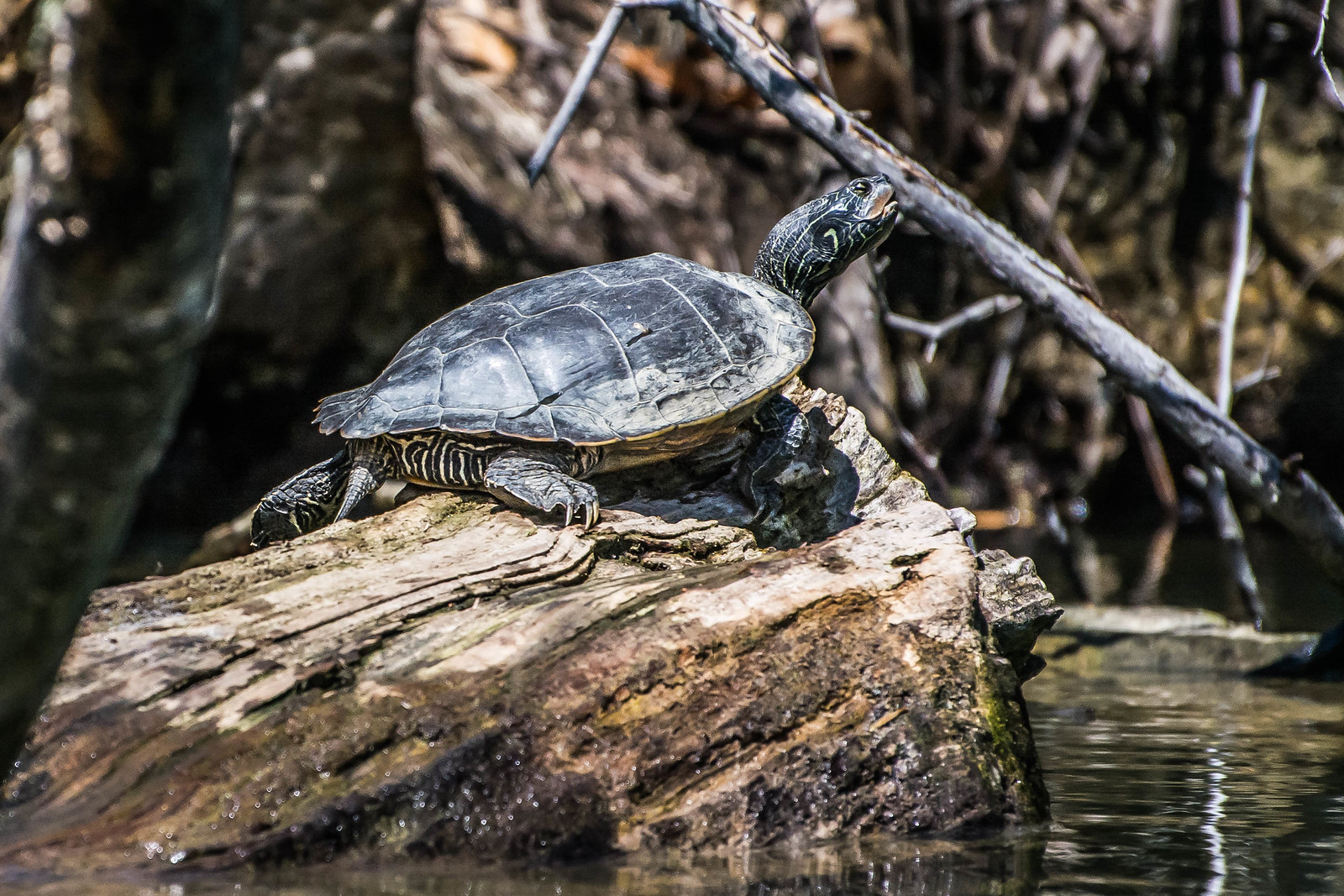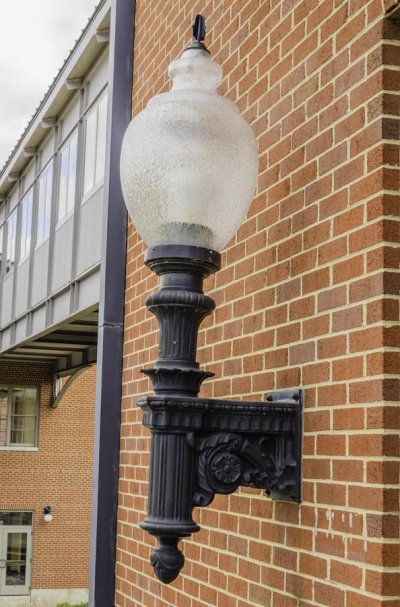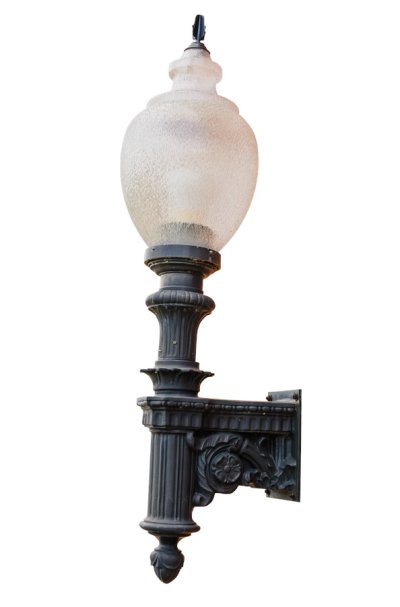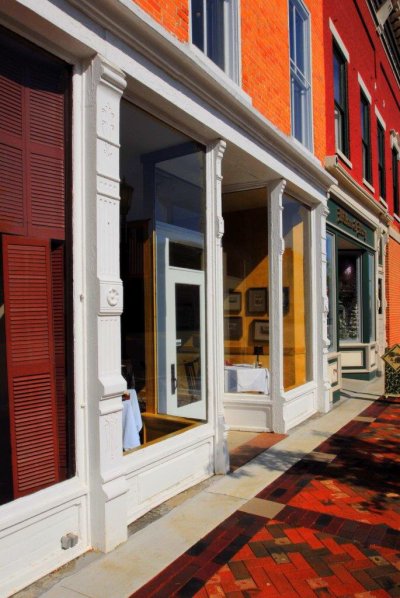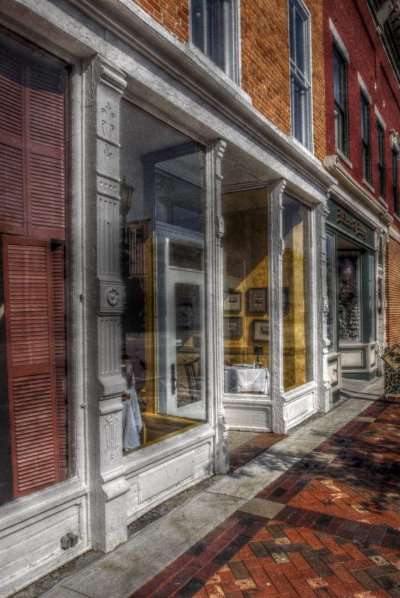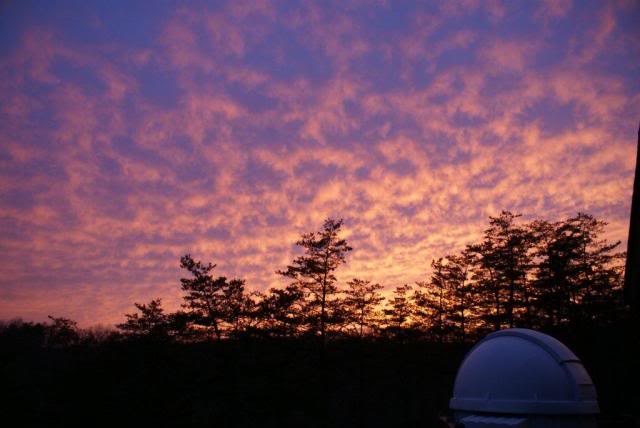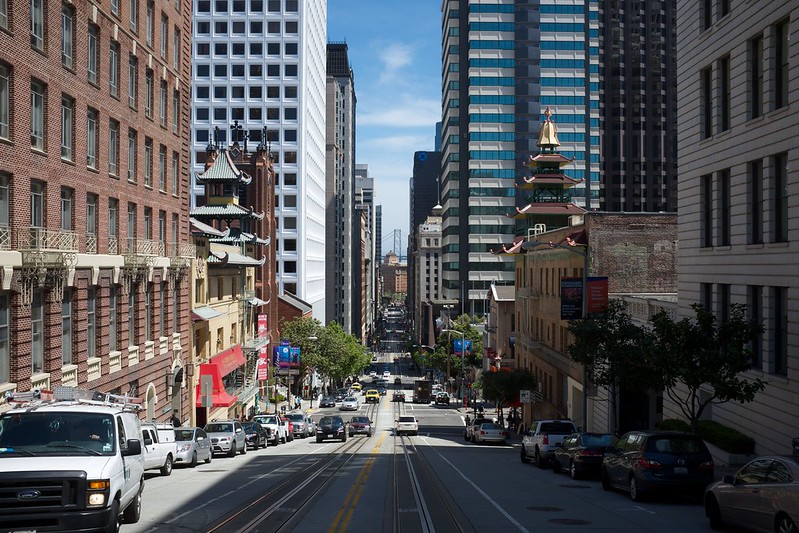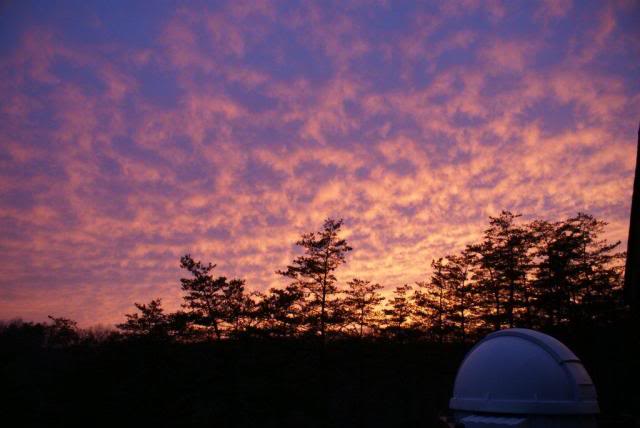Does anyone use the pen tool much in Photoshop? I've recently gotten somewhat ahead of the learning curve on it and once that's done it's pretty neat, although labor-intensive. But the results are worth it. This is an "afterthought" shot I took while at the roundhouse, of a light fixture on the train station.
I did the cutout of the fixture in about 45 minutes, more practice will cut that a lot. There are some places where the rust on the bottom of the fixture is almost the exact same color as the brick so using a color-based or contrast-based selection tool would be difficult at best. Plus, since the pen tool is based on lines, not pixels, so you get a much cleaner cut when the path is turned into a selection.
Anyway the image with the brick wall included has the path imbedded if anyone wants to play with it. I don't know if other software will read that or not. According to
this article almost every image editing program has some variant of it:

